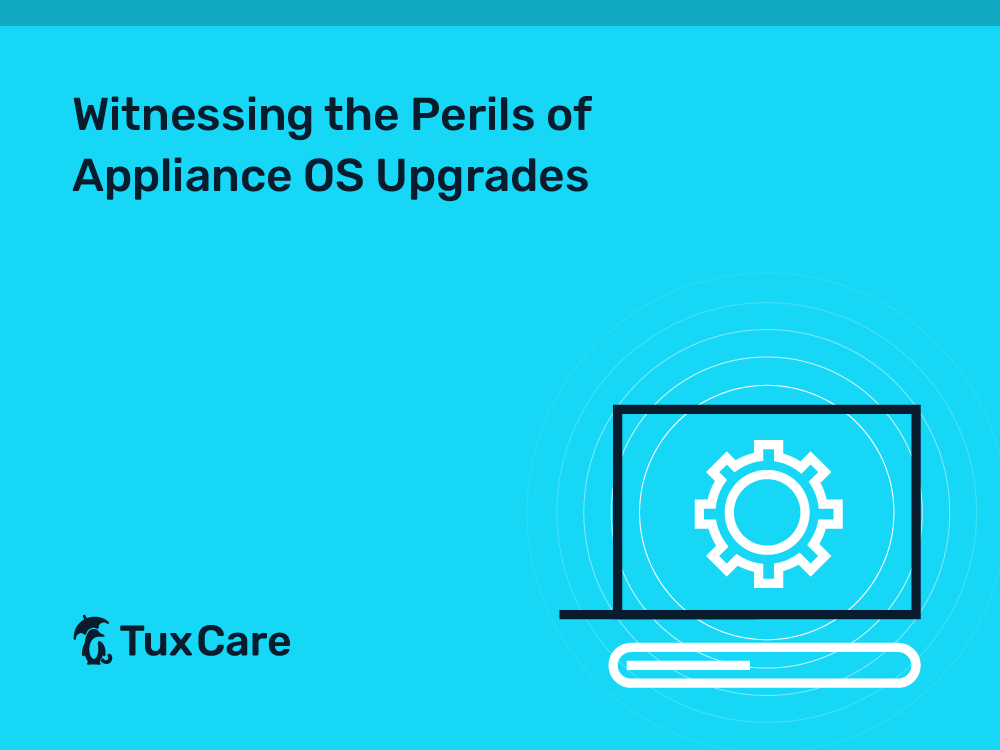Witnessing the Perils of Appliance OS Upgrades
One might assume that upgrading an operating system (OS) is a straightforward task. However, this couldn’t be further from the truth, especially when it comes to specialized appliances. These are not your run-of-the-mill systems; they are intricately tailored for specific tasks, often operating with customized software. Ensuring compatibility while preserving the integrity of these purpose-built functions is a maze of complexities. Let’s take a look into the unique challenges that arise when upgrading the OS in specialized appliances to avoid potentially costly pitfalls .
The Vast Landscape of Linux Distributions
Linux has long been a favorable choice for IT professionals, offering a plethora of distributions, many of which derive and evolve from other established ones like Debian, Ubuntu, and CentOS. The flexibility, security, and open-source nature of Linux make it an ideal foundation for developing operating systems for specific use-cases, such as network appliances, IoT devices, and more.
Tailoring Linux for Appliances
It’s common to see specialized appliances running custom distributions, meticulously crafted to align with their specific use-case and hardware. This might involve kernel modification, removal of unnecessary drivers, and stripping away software packages that are redundant for the appliance’s intended function. While this ensures a lightweight and optimized OS, it also introduces complexities and challenges, especially when it comes to system upgrades.
General vs. Appliance OS
Upgrading a conventional Linux system typically tends to be a more straightforward affair when compared to upgrading an OS developed for an appliance. The latter is often akin to firmware upgrades where even a minor misstep or an unnoticed bug during development could potentially brick the appliance when the firmware is deployed in real-world scenarios.
Imagine an appliance located in a remote telecommunications tower encountering a failure due to a flawed upgrade. The recovery process would not only be costly but also logistically challenging, possibly requiring field technicians to visit the site and execute a recovery procedure. In other situations, the appliance could be left in such a condition that even recovery procedures would be impossible, and would thus incur replacement costs – for the vendor or customers to sort out.
Double Whammy of a Shift to CentOS Stream 8
When a foundational OS for an appliance reaches its end-of-life (EOL) phase, a whole new set of challenges emerges. The absence of further updates, especially security patches, places the users and operators of the appliance in a precarious situation where they could be left vulnerable to emerging threats and security loopholes.
A prime example of this scenario is witnessed in the case of CentOS 8. With its premature EOL, one seemingly straightforward path led towards CentOS Stream 8, which, while being essentially similar, presented a faster update cadence and potential stability issues.
For companies that relied on CentOS 8 for crafting their appliance distributions, the impending EOL of CentOS Stream 8 poses a significant challenge, lacking a painless upgrade path and compelling them towards larger architectural OS changes, potentially jeopardizing the reliability and stability of the appliances.
A Strategic Approach to Appliance OS Management
For IT specialists and CISOs, it’s imperative to develop strategies that not only consider the immediate functionality and performance of appliance OSs but also ensure a sustainable and secure future. This might involve:
Strategic Planning: Consider the lifecycle and support timeline of the foundational OS during the development phase of the appliance.
Modular Design: Adopt a modular approach to OS design that enables smoother transitions and upgrades with minimal disruption to the appliance functionality.
Robust Testing: Implement comprehensive testing protocols for upgrades, ensuring that potential issues are identified and mitigated before deployment.
Security Protocols: Establish stringent security protocols that safeguard the appliance, especially when the foundational OS is in its twilight phase, ensuring that vulnerabilities are managed effectively.
Final Thoughts
Now, all the previous points assume a state where there is ample time for performing such structural analysis and accepting the testing, development, and deployment costs of such solutions. When you already have an in-production appliance operating system, the last thing you probably want, or even need, is to risk all the effort and cost involved in its creation and embark on such changes. At that point, a better alternative might be to find alternative ways of sourcing security updates for the EOL underlying operating systems, and thus continue to offer your own customers a secure operating system, without the upgrade concerns discussed previously.
One such solution comes in the form of CentOS Stream 8 Extended Lifecycle Support from TuxCare, providing the security updates for the most widely used packages in the system without introducing stability-breaking changes.
Navigating through the intricacies of appliance OS management requires a blend of strategic foresight, technical expertise, and meticulous planning, ensuring that the appliances remain secure, efficient, and functional throughout their lifecycle.
As part of your planning, with TuxCare’s Extended Lifecycle Support, you can protect your CentOS Stream 8 systems with ongoing security updates for years after the end-of-life date passes, helping you stay secure until you finally discover your migration path forward.



 Documentation
Documentation Login
Login




